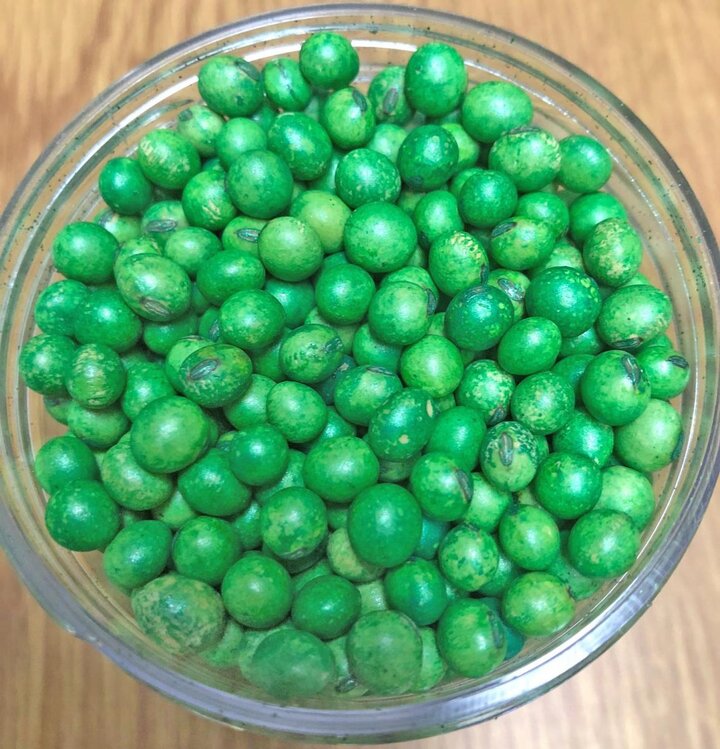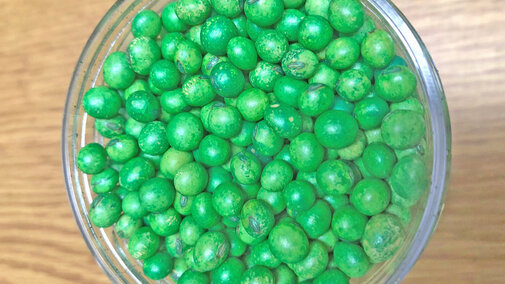Farmer Question: I want to book soybean seed this fall for 1000 acres of soybeans. I have always ordered seed treated with fungicide and insecticide but at $20 per unit, does soybean seed treatment pay? I have been following the UNL recommendation of planting soybeans early.

Answer: Like you, many farmers are looking for ways to trim input costs due to lower commodity prices this year. Cutting costs is usually not easy and certainly needs to be done without reducing profitability. Fall soybean seed purchases require farmers to decide about seed treatment without knowing what weather risks they'll face next spring. The prime culprit with soybean seedling diseases is saturated soil conditions coupled with cold temperature leading to slow emergence. Reduced seedling populations may be spatially erratic, especially in poorly drained areas, and cause spot-replant in those areas. Before deciding about seed treatments, soybean producers should answer four questions.
Field History Questions Relative to Fungicide Treatments for Soybean Seed
- Field History. Is there a history of seedling/emergence problems? If the field has a history of stand problems, treat the soybean seed with a good combination fungicide product.
- Early Planting. If you are planting soybeans early, as recommended by Nebraska Extension, fungicide seed treatments are a necessity. Cool, wet soils are very conducive to poor stands. No-till fields will have cool soils longer into the season than tilled fields and commonly will have more seedling disease problems.
- Phytophthora Disease History. We recommend a preventative fungicide treatment on fields with a history of Phytophthora. These fields will need the appropriate fungicide package with the proper seed treatment rate for moderate to high level Phytophthora control. Examples of active ingredients are metalaxyl, mefenoxam, oxathiapiprolin, or ethaboxam fungicides with excellent phytophthora ratings. Even with resistant soybean varieties, we recommend a fungicide seed treatment as fields with Phytophthora also favor Pythium.
- Sudden Death Syndrome: In fields with a history of Sudden Death Syndrome (SDS), soybean producers should consider using the soybean fungicide treatment ILeVO®. This product has shown promise for addressing SDS in recent university and industry trials. You'll want to analyze the price of the treatment versus past yield losses to SDS in the field. It is important to consider the percentage of the field that has been impacted historically in this decision. Some fields might benefit from using treated seed in only a portion of the field.
More than 38 replicated, UNL on-farm research trials have been conducted with soybean seed treatments (fungicides and/or insecticides) since 2000. To view the results of these trials, search at http://resultsfinder.unl.edu/
Bottom Line
Estimate your early soybean plantings (late April to early May), and treat this seed with fungicide as insurance against water-saturated, cold soils that may lengthen the in-ground time between germination and soybean emergence. Also consider the four field history questions noted above when deciding whether to use soybean seed treatments.
With a late planting date, fungicide seed treatment is not necessarily cost-effective.
Insecticide Soybean Treatments
There is another caveat when it comes to early planting soybeans. In many years, over-wintering bean leaf beetles (BLB) are attracted to these early planted or “magnet” fields. Typically, BLB feeding on unifoliates and 1st trifoliates is inconsequential to soybean yield so insecticide treatment to reduce feeding is not warranted. However, if the over-wintering BLBs carry the Bean Pod Mottle Virus (BPMV), they can vector the BPM virus to young soybean seedlings before they lay their eggs in the soil next to the seedlings.
The infected seedlings go on to be BPMV-infected plants, serving as a potential disease reservoir for later emerging BLBs. The disease can transmit from these early infected seedlings to many more plants.To stop the early BLB vectoring of BPMV to your early planted and likely highest yielding fields, we recommend insecticide-treated seed be used for at least late April planted varieties. We do not recommend insecticide treatments for later planted fields unless you have experienced bean leaf beetle BPMV infection in the past.
Related Resources
For more information, see:
- Seed Treatment Fungicides for Soybeans (NebGuide G1852).

